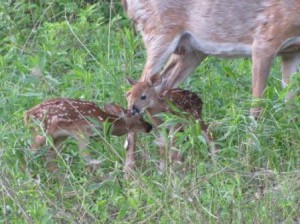 I just ran across a study conducted by the University of Florida years ago. It found that in areas where hunting is permitted, whitetail does give birth to more male fawns than female fawns.
I just ran across a study conducted by the University of Florida years ago. It found that in areas where hunting is permitted, whitetail does give birth to more male fawns than female fawns.
Researchers examined the reproductive tracts of 380 legally harvested does from four tracts across Florida. Two of the areas were off limits to general hunting, and the other two WMAs were regularly hunted.
More than 90 percent of the does in all the areas were pregnant, the research found. Males comprised 56 percent of the fetuses in the hunted areas but just 39 percent in the non-hunted areas. Additionally, the researchers found 38 percent of does on hunted sites carried twins, compared with just 14 percent twins on non-hunted sites.
Why would does birth more male fawns in areas where mostly bucks are hunted and harvested? The scientists theorized a doe’s reproductive cycle offers one explanation. Does typically go into heat for about 72 hours. In non-hunted areas, does find mates quickly, while they take longer to find buck mates in hunted areas. The later does breed while they’re in heat, the greater the proportion of male fetuses, the researchers said.
In a related project, the Florida biologists found that while does typically wait for bucks to find them, they sometimes seek out bucks to breed with in hunted areas where there are fewer bucks around.





